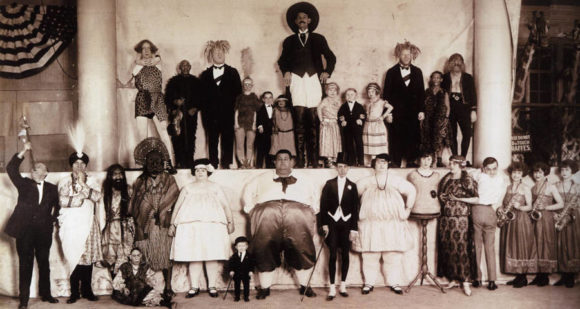Stories from the Heyday of the Circus Sideshow
As fascinating as these stories are, one must wonder how these legendary performers were treated when they were off-stage…

Ringling Bros. “Congress of Freaks” circa 1924. Wikimedia Commons
From all-that-interesting.com,
The Sad Stories Of The Ringling Brothers’ “Freak Show” Acts
By Erin Kelly
From “The Four-Legged Girl” to “The Dog-Faced Boy,” here are some of the strangest behind-the-scenes “freak show” tales.
“On May 19, 1884, the Ringling Bros.’ Circus officially opened for business, capitalizing on the extreme and bizarre to earn profit. It worked: For many years, the most popular component of the circus was the “Freak Show.”
Though often thought of as exploitative, degrading, and cruel, most reports paint a picture of headlining “freaks” being both accepted and well-paid by the circus staff. In many cases, the performers not only out-earned everyone in the audience, but also their own promoters. Any mistreatment generally came from the public who did not look at the performers as people.
Sideshow acts were not always born different; sometimes they were “manufactured” to bring in money from the crowds.
Clyde Ingalls, manager of the Ringling Bros. and Barnum & Bailey sideshow in the 1930s once said, “Aside from such unusual attractions as the famous three-legged man, and the Siamese twin combinations, freaks are what you make them. Take any peculiar looking person, whose familiarity to those around him makes for acceptance, play up that peculiarity and add a good spiel and you have a great attraction.”
As medicine began to explain the unexplainable, circus freak shows fell out of fashion. But while they thrived, countless legendary performers moved through their ranks. Here are some of their stories:…”
For the stories, click here.
Share

